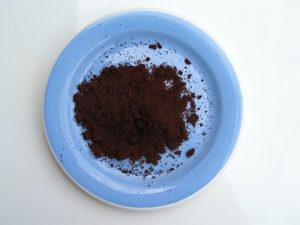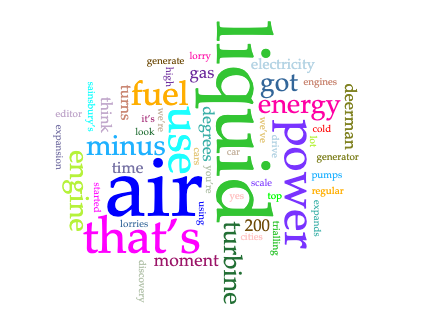Unit 2 Circular Economy: SDG7
Affordable and Clean Energy

Goal no. 7 of the 2030 Agenda for Sustainable Development aims to ensure access to affordable, reliable, sustainable and modern energy for all.
Click on the arrows to reveal more information about SDG7. You don’t need to remember everything you read – the main thing is to get an overview of this Sustainable Development Goal.
Information and targets reproduced under the terms and conditions of United Nations websites. Copyright (2023).
A reminder that links in this e-book do not open in a new tab. If you click on any of the links to a webpage, click the back button in your browser to return here.
Key vocabulary
Check that you know the meaning and the whole word family of these key words before you begin the Unit. (NOTE: there may be other versions of the word forms – these are the common forms in the context of SDG 7). Also notice some common collocations in bold in the ‘Why this goal? and ‘Targets’ sections above. Add any new words, word families or collocations that you would like to remember to your vocabulary book.
Verb Noun Adjective
To generate energy energy energetic
To afford affordability affordable
To rely on reliance reliable
To renew renewal renewable/non-renewable
Introduction
Fuel is a material such as coal, gas, or oil that is burned to produce heat or power. In Unit 1 you looked at consumer waste products and in this Unit you’ll find out how scientists are investigating products such as leftover coffee grounds – the small chopped-up bits of coffee beans left over after brewing the coffee – to see if they can be used to create fuel.

Energy sources may be renewable or non-renewable. Test your knowledge in this activity by dragging and dropping each type of fuel into the correct category (click the ‘start’ button to begin):
Reading – Six things you can do with coffee – after you’ve finished drinking it
Before you read
In Unit 1 you learned about ways to reuse plastic waste. In this reading you’ll learn about ways that coffee grounds can be used as a biofuel.
Prefix ‘bio-‘
- The author researches biofuels. The prefix bio- means ‘life’ and relates to living things. How does the prefix bio- change the meaning of the word fuel?
- Complete the 3 definitions:
Scan for specific information
Read for detail
Read again more carefully (max 10 mins) and make notes in the ‘Add detail to the six uses’ section in the above activity to explain how the coffee grounds are used. When you have finished, download your notes to your own computer.
Six things you can do with coffee – after you’ve finished drinking it

Many of us depend on coffee to fuel our early morning meetings, mid-afternoon slumps or all-night study sessions. These days, the words “coffee” and “fuel” are half-jokingly synonymous. More than 9m tonnes of the bean are produced annually around the world and, once we brew it, an awful lot of waste is created. The vast majority ends up in landfill.
Researchers in South Korea, however, have discovered a way of using waste coffee grounds as a fuel in a far more literal sense. In a study in Nanotechnology, they report using coffee waste to produce a carbon material full of small pores which increase the surface area, known as “activated” carbon. This new material is capable of absorbing and storing methane and hydrogen, both of which can be used as fuels.
While the ability to store these fuels from such a cheap material is a great step towards making this technology more viable, it also provides an environmental advantage: methane is a harmful greenhouse gas.
This is by no means the only use for waste coffee grounds. As a relatively pure and essentially free waste stream, scientists, engineers and entrepreneurs have looked into various ways of putting it to use.
Burn coffee for low-cost fuel
For a few years now, Nestlé has been using waste coffee grounds from its instant soluble coffee production as thermal fuel. It currently uses coffee to cook the food it produces in more than 20 factories globally, displacing more than 800,000 tons of coffee grounds each year that would otherwise go to landfill.
In a more specific enterprise, the London-based company Bio-bean is trying to turn waste from local instant coffee producers (nearly 200,000 tonnes in London and south-east England alone) into biomass pellets for power generation, as well as residential heating using trendy biomass burners. These beans burn more cleanly and contain 50% more energy than traditional wood pellets. However, unlike Nestlé Bio-bean first removes oil from the coffee, which brings us to our second point.
Turn coffee into liquid fuel
Like most plant seeds, the coffee bean contains a significant amount of oil which can either be squeezed out or chemically extracted. It can then be converted into biodiesel, a liquid with similar properties to that of regular diesel.
My own research found coffee-derived biodiesel wasn’t affected by where the coffee was grown, the type of bean or how it was brewed. This is a great plus as it means the coffee-derived fuel will give off a predictable and consistent amount of energy when burnt.
Coffee grounds can also be fermented to produce ethanol or subject to extreme heat and pressure in order to create bio-oil, a material similar to crude oil. Both processes, however, are expensive. Biodiesel is the only fuel that seems to be viable on a larger scale, hence Bio-beans’s endeavours to commercialise it.
It’s full of valuable chemicals
Coffee contains a number of chemicals that, when isolated and purified, can serve very specific uses. Examples include chlorogenic acid, a food additive that slightly lowers blood pressure; trigonelline, which helps prevent and treat diabetes and central nervous system diseases; polyhydroxyalkanoates, which are used to make bioplastics; and a wide range of antioxidants which can be used in healthcare or added to fuel and lubricants to lengthen their lifetimes.
Compost coffee?
Coffee grounds are rich in nitrogen, a vital nutrient for plant growth. This is known by a number of coffee shops which will provide their used coffee to customers who request it. It reduces their waste, and might be tipped into organic, caffeine-infused fruit and veg. What barista could say no to that?
Soaking up heavy metals
Waste coffee is even effective at soaking up harmful “heavy metals” such as chromium, copper, nickel or lead which often leak out of chemical plants, farms or factories and cause significant damage. In specific lab conditions waste coffee has been reported to remove up to 91% of heavy metal ions from solution – a good example of potential environmental benefits.
Coffee goes high-tech?
Most complex of all, researchers have investigated using coffee to make supercapacitors – electrical stores capable of holding more power and more charge cycles than traditional batteries. Ultra-thin, porous carbon nanosheets have been produced with good electrical properties.
Whether it’s used at home as garden compost, in lab for research or even in industrial fuel production, there are clearly lots of uses for waste coffee. This huge variety could potentially be a negative thing. After all, how do you decide what to do with something so versatile?
One thing is for sure, however. We certainly shouldn’t be throwing it away.
NB This version of the article, with permission from the author, does not include the hyperlinks to supporting articles found in the original. Click the title for the full version of the text, published under a CC BY ND licence in The Conversation, which should be used for reference and sharing.
Vocabulary – Compound adjectives
Vocabulary focus – Compound adjectives
The 3 compound adjectives below, taken from the text, are noun + past particle combinations. Read the 3 sentences and notice the compound adjectives in bold.
1. The London-based company Bio-bean is trying to turn waste from local instant coffee producers into biomass pellets for power generation.
A London-based company = a company which is based (situated) in London.
2. My own research found coffee-derived biodiesel wasn’t affected by where the coffee was grown.
Coffee-derived biodiesel = biodiesel which is derived (made from) coffee.
3. Coffee grounds are rich in nitrogen. This is known by a number of coffee shops which will provide their used coffee to customers who request it. It reduces their waste, and might be tipped into organic, caffeine-infused fruit and veg.
Caffeine-infused fruit and veg = fruit and vegetables which are infused with (saturated with) caffeine.
Practice
Listening – Fuel (5 mins)
![]()
Credit: The Conversation, Anthill 4. Annabel Bligh, Business & Economy Editor and Podcast Producer, Gemma Ware, Editor and Co-Host and Will de Freitas, Environment and Energy Editor. Licence: CC BY ND

Before you listen
You learned about the potential of left-over coffee grounds in the reading. In this podcast you’ll hear about research into the possibility of using air (that has been cooled and turned into a liquid) as a potential fuel of the future.
- What is your first thought when you hear about the idea of using air as a fuel?
- Re-read the ‘Why this Goal?’ section at the start of this Unit and:
- find out why using fossil fuels such as gas, coal, and oil that were formed underground from plant and animal remains millions of years ago is not sustainable.
- choose one fact that highlights the importance of the work that scientists are doing to develop ideas for affordable and clean energy.
- Look at the word cloud created from the transcript. The most frequently used words are: air (17); liquid (14); use (6); power (6); fuel (5). With the idea of air as a potential fuel in mind, create a sentence that uses as many of these words as possible and predicts the main point of the listening.

Listen
Play the audio here.
(Or access The Conversation podcast, and listen from 14.43 mins to 19.30mins).
Listen for the main idea only during the introduction to the podcast and to Radcliffe’s description of how liquid air can be used as fuel. When you hear Radcliffe begin to talk about the use of liquid air in refrigeration units on the back of lorries, listen for detail and complete the task.
Discuss
- Make a list of as many benefits of using air as fuel as you can think of.
- What overlaps can you identify between SDG 12 – Responsible Consumption and Production, and SDG 7 – Affordable and Clean Energy?
- Look at the 16 SDGs on the Welcome page and decide if there are any other overlaps between the Goals.
Download Unit 2 Listening transcript
Function – Comparing and contrasting
When talking or writing it is common to discuss ways that things are similar or different to each other. We make comparisons between elements that are similar, and we contrast elements that are different.
Read the sentences that compare and contrast fossil fuels and air as energy sources, and show why clean energy sources are important. As you read, notice the linking words and phrases in bold.
A. Linking words and phrases that allow you to compare within one sentence:
| Air is a clean source of energy, whereas/while fossil fuels pollute the atmosphere when burned.
Whereas/while air is a clean source of energy, fossil fuels pollute the atmosphere when burned. In contrast to fossil fuels, air is a renewable source of energy. Compared with fossil fuels, air is a more sustainable source. |
B. Linking words and phrases indicating difference across two sentences:
| Burning fossil fuels contributes significantly to the total global greenhouse gas emissions. | By contrast, In contrast, On the other hand, |
using air as a fuel makes no contribution to greenhouse gas emissions. |
C. Linking words and phrases indicating similarity across two sentences:
| Access to affordable and reliable energy services is fundamental to reducing poverty and improving health. | Similarly, Likewise, In the same way, |
providing clean energy in all countries can both encourage growth and achieve sustainable development. |
Practice
Writing
In this Unit you’ve learned about biofuels and innovative renewable energy sources. Ristifah’s story continues the theme of renewable energy. Ristifah lives in a rural village in Indonesia.
Read Ristifah’s story and write a response to it that incorporates what you know about the circular economy, and SDG7 Affordable and Clean Energy. Write about:
- How the circular economy functions in Ristifah’s context.
- The positive overlaps between SDG7 and the other SDGs that are created in this initiative.
- The benefits of ‘clean’ renewable energy sources in this context?
- Any similar initiatives that you are aware of in your own context or elsewhere.
- Any other topic relevant to the circular economy or SDG7.
The ‘Energy Patriots’ Bringing Electricity to Indonesia’s Remote Villages
A consistent rural electricity supply supports opportunities for greater economicdevelopment and helps people in remote villages live healthier lives. For millions ofvillagers among the 17,000 islands in Indonesia, a 12-hour-per-day erratic electricitysupply in remote areas is the norm.
With students studying by candlelight at night and health centres not running at fullcapacity, these communities face an uphill struggle to improve their well-being. AUN-backed initiative from the Indonesian Ministry of Energy and Mineral Resources (MEMR) is putting “energy patriots” in local villages to prepare infrastructure for solarenergy generation.
Ristifah is one of 23 energy patriots overseeing the installation of off-grid solar power plants. Growing up in a rural village, Ristifah understands the struggle with limited electricity supply. “We only had three hours of electricity a day,” says Ristifah. She will move 1,500 km away from her home to a coastal fishing village in Muna. Like most island villages, Muna is heavily dependent on fuel-fired generators for its electricity, compromising the inhabitants’ health. The solar-power system will offer thevillage a clean energy option and the opportunity for greater economic development. As an “energy patriot”, Ristifah will be helping the community determine electricity tariffs, liaising with contractors, recruiting operators and technicians, and helping the local renewable energy service providers manage new power plants.
“I hope to inspire more girls to achieve higher education,” she said. “I dream of the day when the houses sparkle with lights that the community installed, and children can have a better future.”
Department of Economic & Social Affairs Statistics Division (2022) ‘Bringing Data to Life: SDG impact stories from across the globe.’ Available at: https://unstats.un.org/sdgs/report/2022/SDG2022_Flipbook_final.pdf
Data Visualisation – Cell phone recycling
In Units 1 and 2 you’ve learned about the circular economy – use less stuff; reuse the stuff that you do use so that it lasts longer; and when you really don’t need it, recycle it, so that it’s converted into another reusable product or material. All consumer waste products can become part of the circular economy. This infographic deals with recycling your old mobile phone when you buy a new one. According to Ana Mestre, we should either keep our phones for much longer or make phones from biobased materials. (Click here to see the infographic full screen).
- Read the title and the introduction – ‘Why should I recycle my phone?’ – and find out the main reason for recycling your phone. Do you usually recycle your old phone when you buy a new one?
- Skim read the seven steps in ‘Your phone’s recycling journey’ (max 2 mins) and decide on the correct heading (a – g) for each of the sections:
a. Testing & payment
b. Phone lifecycle – 4.5 lives over 9 years!
c. A new life for your phone
d. Where does your phone end up?
e. Repair and refurbish
f. End of the line
g. Grading
(Check the answers in the transcript below).

Download Unit 2 infographic transcript & answers
Speaking
Read the summary below and discuss the questions that follow:
SDG7 Summary
Lack of access to energy supplies and transformation systems is a constraint to human and economic development. The environment provides a series of renewable and non-renewable energy sources i.e. solar, wind, hydropower, geothermal, biofuels, natural gas, coal, petroleum, uranium. Increased use of fossil fuels without actions to mitigate greenhouse gases will have global climate change implications. Energy efficiency and increase use of renewables contribute to climate change mitigation and disaster risk reduction. Maintaining and protecting ecosystems allow using and further developing hydropower sources of electricity and bioenergy.
- You’ve learned about the use of a consumer waste product (coffee grounds) as a biofuel, and the potential of air as a clean renewable source of energy. When one in five people globally still lack access to modern energy, how important it is it to research the use of alternative fuels (e.g. wind, solar, bio-), and why?
- Can you give a definition for the words in bold above?
A reminder that if you have access to the internet and are studying by yourself without other people to practice your spoken English with, you can use artificial intelligence (AI) to gain fluency practice. See here for instructions and prompts.
Here are some prompts related to this Unit:
- ‘Let’s have a dialogue about biofuels. Tell me some examples and I will ask you questions about them.’
- ‘Tell me which energy sources you think are the most sustainable and why. Give me opportunities to agree or disagree with your selection and or your reasons.’
- ‘Let’s have a dialogue about how important it is it to research the use of alternative fuels (e.g. wind, solar, bio-).’
Looking ahead to unit 3
In Unit 3 you’ll be learning about the textile industry.
- Are there any examples in your local context of innovative ways to reuse textiles?
- How sustainable is the clothing/textile industry in your local context?
Extension activities
After every two Units you are offered a choice of extension tasks. Use the menu bar on the left-hand side of the screen to access Extension Activities Units 1 and 2.

